Oliver P. Morton Statue
Introduction
Text-to-speech Audio
This statue of Oliver Hazard Perry Throck Morton can be seen outside of the Indiana state capital. His likeness is also on the Soldiers and Sailors Monument, also in downtown Indianapolis. The capital grounds house several markers on this tour. The Morton statue bears mentioning in our tour because its subject was the state governor during the Civil War. He has the unique distinction of being the first Indiana governor to actually be born in the state of Indiana.
After the Battle of Fort Sumter in 1861, Morton issued the call for volunteers. Prussian officer August Willich answered the summons and organized the 32nd Indiana made up of German immigrants, also known as the 1st German. There is a certain contentious nature involved with all Civil War monuments due to the iconography depicted. This memorial features the images of Union soldiers on guard and has not been challenged as inappropriate. The monument to Confederate prisoners of war in nearby Garfield Park was not so fortunate. Though Indiana was a Union state, this monument originally was a conciliatory gesture to a former foe. Later association of the monument with the Ku Klux Klan (KKK) tainted the original altruistic intent and caused the monument to be removed in 2020.
Images
Oliver P. Morton Statue
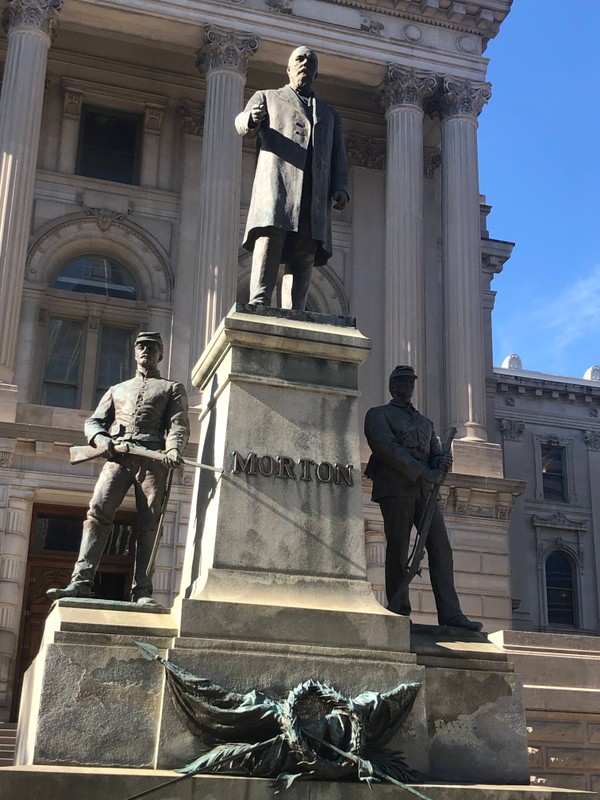
Oliver P. Morton Statue side view
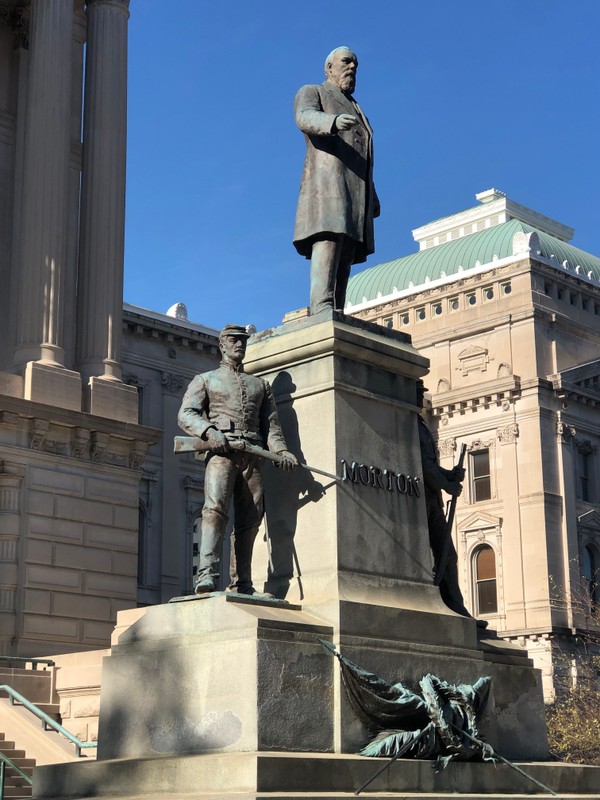
Oliver P. Morton Statue
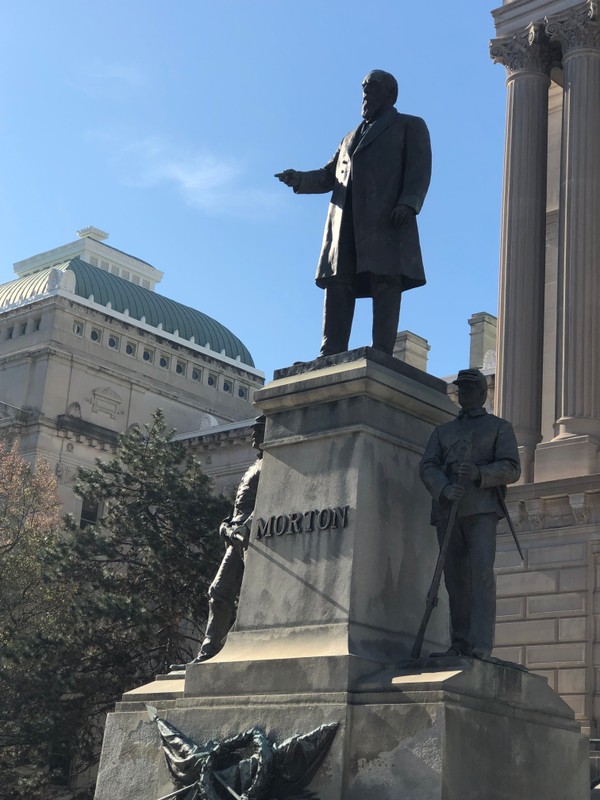
Civil War Arsenal Historical Marker with information about Governor Morton
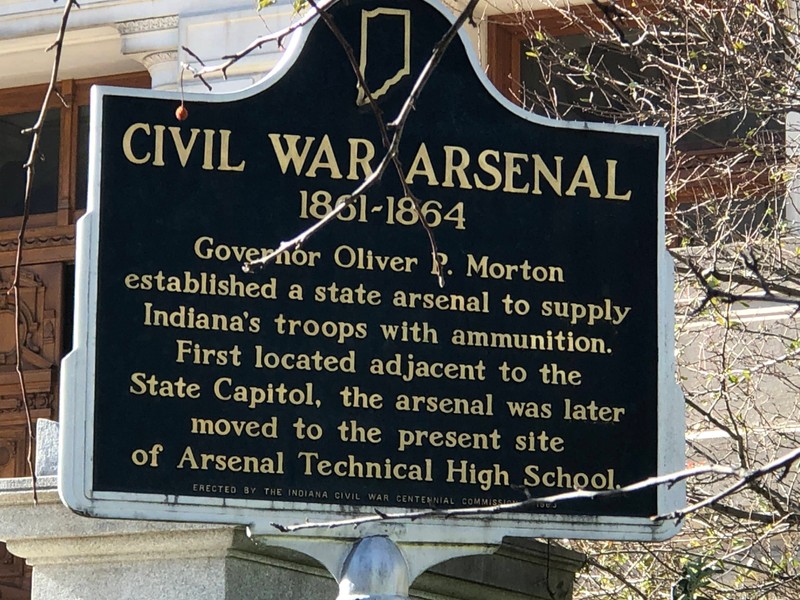
Map of Camp Morton
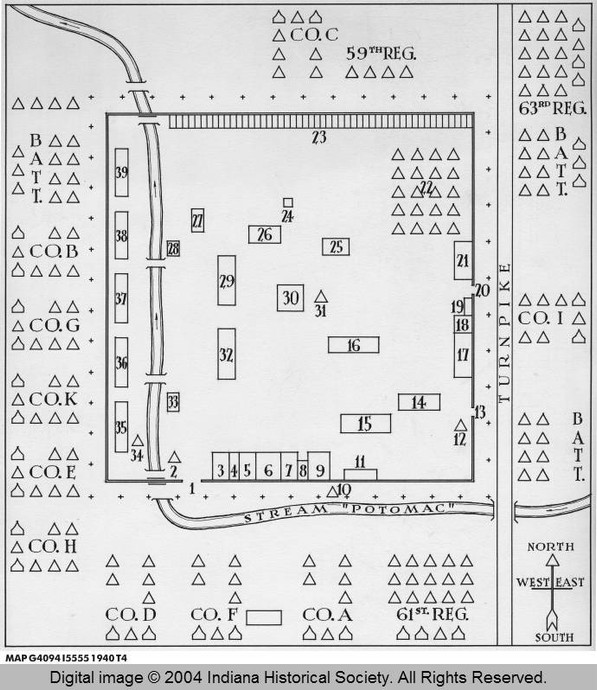
Backstory and Context
Text-to-speech Audio
When Morton came into office, Indiana was in a state of serious corruption and financial debt. Barely three months into his time in office came the first shots on Fort Sumter in 1861. It wasn't long before he was sending President Lincoln a message that the Hoosiers would rise to the call to serve in the Union Army. Indiana would become the first of the country's western states to send troops to the Union Army and Morton became a strong supporter of Lincoln.
Despite the state's dire financial situation, legislation initially funded the organization and outfitting of Indiana's soldiers. However, as the war went on, sympathies for the Union and Confederacy were openly hostile so there was a refusal to pay newly recruited troops. In response, Morton raised funds through friends and associates as well as borrowed funds from Indiana businessmen to keep the troops of Indiana fed, armed, and clothed. Camp Morton, where the troops were organized and trained in Indianapolis was named for him. Prior to the war, the site of Camp Morton served as the state fairgrounds.
Come 1865, Morton would suffer from partial paralysis but continued to carry out his duties from a wheelchair. After the war, he would serve in the Senate. After a second bout of paralysis in 1877, he would die. Almost twenty-five years later in 1905, the Union veterans of Indiana wanted to honor Morton for all he did for his state during the Civil War. In the summer of 1907, a 12-foot statue of Morton would be unveiled in front of the Statehouse facing the Indiana War Memorial.
Sources
The story behind the Oliver P. Morton, the 'War Governor' with the big statue, IndyStar. Accessed December 3rd, 2022. https://www.indystar.com/story/news/history/retroindy/2020/06/19/war-governor-oliver-p-morton-anti-slavery-civil-war-indiana/3204900001/.
Rodgers, Thomas E. . Hoosier Soldiers in the Civil War, Indiana Historical Bureau. Accessed December 4th, 2022. https://www.in.gov/history/about-indiana-history-and-trivia/annual-commemorations/civil-war-150th/hoosier-voices-now/hoosier-soldiers-in-the-civil-war/.
Peake, Michael A.. Blood Shed in This War. Indianapolis, IN. Indiana Historical Society, 2010.
Map of Camp Morton, 1862, Indiana Historical Society. January 1st, 2004. Accessed December 4th, 2022. https://images.indianahistory.org/digital/collection/dc008/id/7.
Photographed by Monica Martin
Photographed by Monica Martin
Photographed by Monica Martin
Photographed by Monica Martin
Indiana Historical Society
